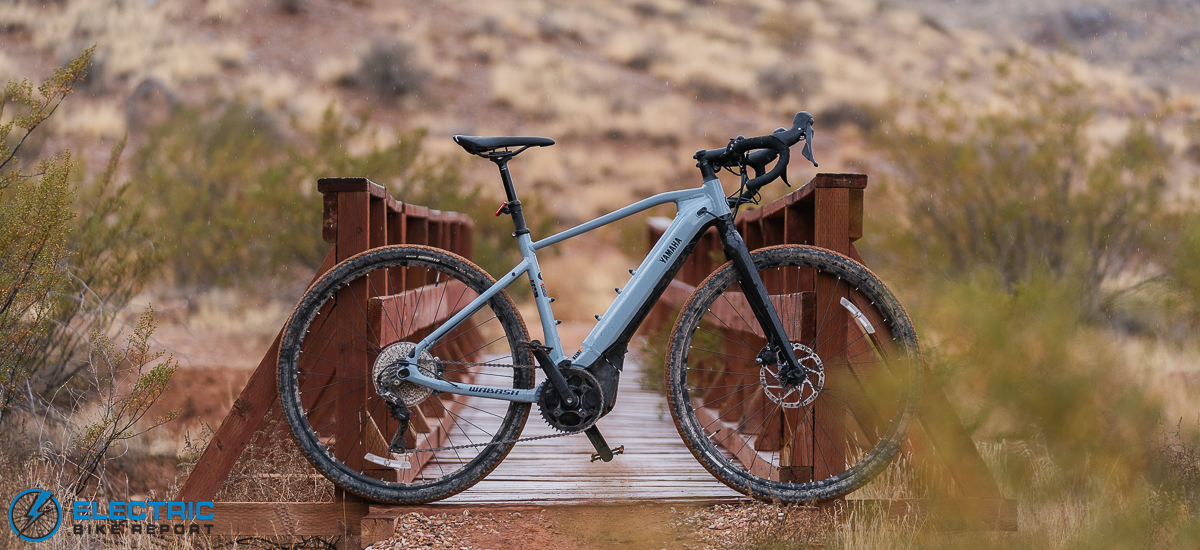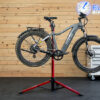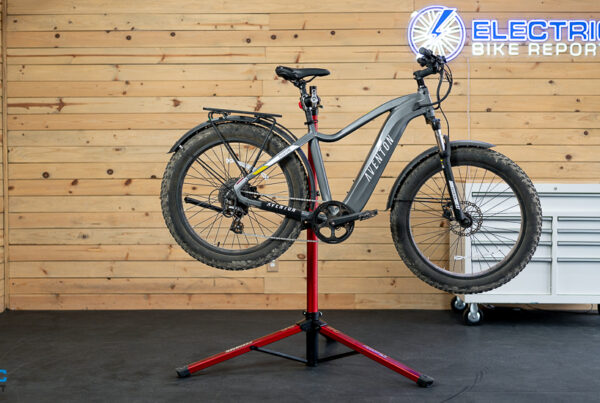While testing the Wabash RT on both gravel roads and paved bike paths, we had the chance to evaluate its ride quality in both scenarios – and overall, we were quite impressed.
Yamaha intends for the bike to be used by both road and gravel cyclists, though we found that it leaned more heavily into gravel with its handlebars, tires, suspension/dropper seatpost, and overall geometry.
In truth, when compared to similar gravel e-bikes from other well-established, popular brands, the Wabash RT’s geometry is a bit more relaxed. It comes in three frame sizes (S, M, and L) with reach ranging from 368mm to 402mm and stack from 595mm to 617mm, so its forward-leaning riding position is somewhat less aggressive and more upright than much of its competition. With a wheelbase ranging from 1057mm to 1090mm, it’s also a little on the longer side.
While less suited to racing, we found its positioning to be comfortable for long periods of time, and perhaps more friendly to commuters who plan to take advantage of the option to equip the bike with fenders and a cargo rack. Its longer wheelbase helped the bike to feel stable and planted at high speeds, while not so long that it negatively affected handling.
Its overall handling was quick, light, and responsive, but its weight prevented it from feeling too airy. When using the flared drops on the handlebar, we found cornering especially sharp and precise. The 700c x 45mm Maxxis Rambler tires did a fantastic job of gripping and remaining stable when carving through loose dirt.
The Wabash RT comes with tubeless-ready rims and tires, making it possible with a few steps to convert to a system less prone to flats. We recommend going tubeless, as the 120tpi EXO version of the Rambler tires, which are lighter and less durable, provided little protection when using tubes (at least in our local desert environment where sharp things are plentiful).
We greatly appreciated the fact that the Wabash included 45mm tires for added comfort and stability. The tires can be aired down to make the ride softer (and provide better grip) since there is no front suspension. The bike does, however, include a dropper seatpost with 40 or 60mm of travel depending on frame size, which also includes 25mm of suspension to smooth out any bumps.
.
.
.
#Yamaha #Wabash #EBike #Review #Electric #Bike #Report
Source link








